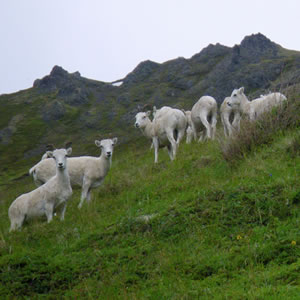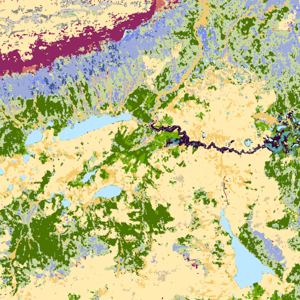Research, conservation, and effective natural resource management often depend on maps that characterize vegetation and geophysical patterns. Vegetation and landscape ecologists at ACCS develop vegetation and wetland maps to spatially describe patterns of vegetation community composition and structure as well as wetland geophysical characteristics for terrestrial landscapes across Alaska. Our approaches include novel continuous maps that are consistent with ecological theory and minimize information loss (see Nawrocki et al. 2020). We developed quantitative continuous foliar cover maps that represent the distribution and abundance of a suite of 15 important plant species or aggregates in arctic and boreal Alaska and adjacent Yukon (North American Beringia). Currently, we are developing improvements to the continuous foliar cover maps for North American Beringia. In the future, we plan to create similar continuous foliar cover maps for important plant species in southern coastal Alaska (Temperate North Pacific) as well. Our mapping approach extends field data to analyses of phenomena that occur beyond the site scale, such as wildlife habitat and nutrition.
Visit the following related pages on wildlife habitat and nutrition, our data catalog, and the AKVEG database using the button below:


